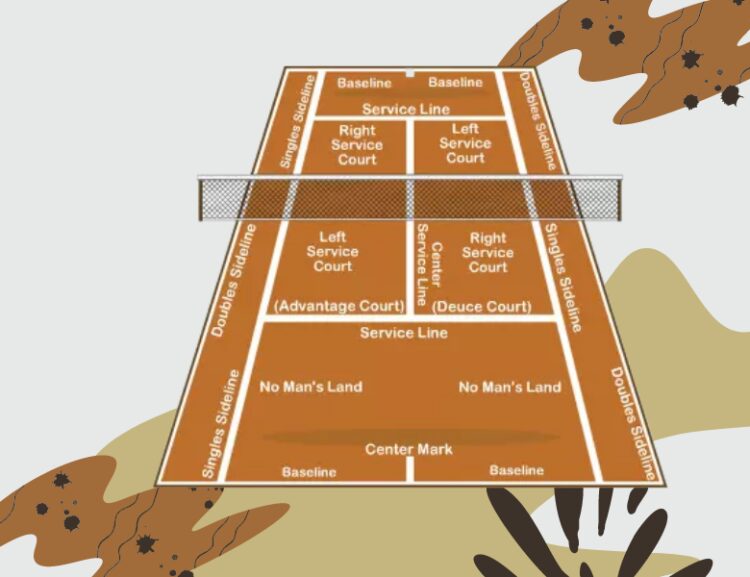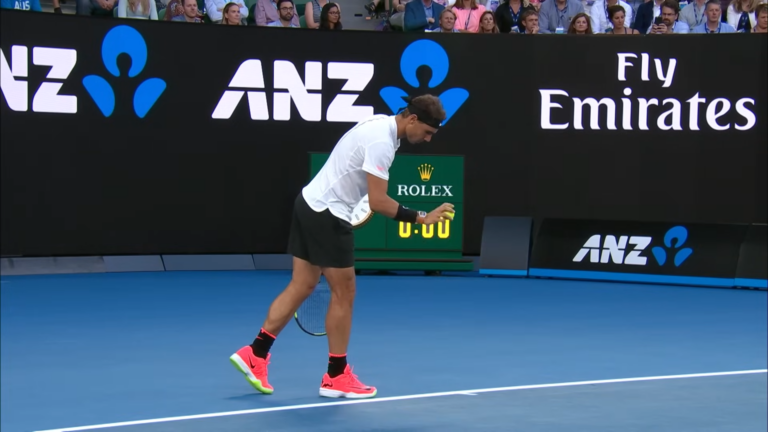The tie-breaker is a mini-game with its own set of rules and nuances. It’s designed to bring a resolution to a set that’s locked in a 6-6 deadlock.
Understanding the intricacies of tie-breaker scoring is crucial for any player, whether you’re serving up aces in a professional arena or rallying with pals on the local courts. It’s not just about the points; it’s about managing the moment, controlling the pace, and seizing opportunities.
While never go into the highest level of tennis by reaching ATP, I also played a lot of games. Sessions with my friends are similar because we keep the same rules.
Therefore, the tie-breaker remains the part of the game with most pressure. It is crucial to understand the rules about tie-break scoring to create the right strategy for facing this part of the game.

Tiebreaker Explained
The tiebreaker is tennis’s answer to a suspenseful finale when players are locked in a 6-6 stalemate. It’s a swift, decisive mini-game that determines the set’s winner.
As someone who’s both coached players through the nerve-wracking moments of a tiebreak and faced them firsthand across the net from friends, I’ve come to see it as a thrilling challenge. The tiebreak shifts the momentum, demanding a different kind of focus from the standard games.
In essence, the tiebreaker is a microcosm of the match itself, where mental fortitude is as crucial as physical prowess. Each point carries an amplified significance, and the usual rhythm of the game changes. You’re no longer playing just to hold serve or break your opponent; you’re playing for the set itself. This heightened pressure can change the dynamic of the match, making the tiebreaker a unique test of a player’s resolve and tactics.

Game Length
A standard tiebreaker is played to seven points, but it’s not as simple as getting there first. You must win by a margin of two points. This rule ensures that the game doesn’t end on a mere fluke but on a clear demonstration of skill and nerve. In my coaching sessions, I drill into players that the tiebreaker isn’t a sprint; it’s a strategic dash to the finish where every point is a battle in itself.
During casual matches with friends, we’ve sometimes played extended tiebreakers, pushing beyond the conventional seven points for the sheer joy of the challenge. Whether it’s a friendly game or a competitive match, the length of the tiebreaker can test the endurance and concentration of even the most seasoned players.
Winning
Winning a 7-point tiebreak requires a blend of aggression and restraint. The key is to maintain a balance between playing your shots confidently and not overreaching. I always advise players to focus on their strengths, whether it’s a powerful serve or a reliable baseline game. In the heat of a tiebreak, it’s these reliable weapons that can carry you through.
- Stay Aggressive: Keep your opponent on the back foot.
- First Serve Percentage: Make your first serve count; it’s a valuable weapon.
- Minimize Errors: Play within your limits to reduce unforced errors.
- Mental Toughness: Keep a cool head; emotional control is half the battle.
Serve Order

The serve order in a tiebreak is a departure from the regular serving sequence in tennis, and it can throw off even experienced players. The player who serves first in the tiebreak will only serve once, and then the serve shifts to the other player for two serves.
This pattern continues until the end of the tiebreak. As a coach, I stress the importance of the first serve in the tiebreak—it sets the tone for what follows.
When playing with friends, we often mimic the pros, sticking strictly to the serve order to give our games a competitive edge. It’s a good practice because it replicates the pressure you’d face in a tournament.
Remembering the serve order and using it to your advantage, perhaps by planning your strongest serves for your two-point turn, can be a strategic element of your tiebreak game plan.
Court Rotations
Court rotations during a tiebreak are straightforward but crucial to remember. After the first point, players switch ends after every six points. This rule is in place to mitigate any advantages that might come from environmental factors like the sun or wind. In my coaching, I remind players that these switches can offer a momentary mental break.
Use this time to reset and focus on the next set of points. In the friendly rounds I play, we sometimes casually overlook these rotations, but they’re a vital part of the game’s fairness and rhythm.

Tie-Breaker Scoring Tips
When it comes to tie-breaker scoring, a few tips can make a significant difference. First, remember that every point in a tiebreaker is like a game in itself. I teach my students to approach each point with a fresh mindset, as if the score is always 0-0. This helps in maintaining focus and not getting bogged down by the scoreboard pressure.
Secondly, it’s essential to keep your strategy flexible. If something isn’t working, the tiebreak gives you a chance to change tactics quickly. Here’s a simple table that I use to help players visualize their approach:
| Point | Strategy | Goal |
|---|---|---|
| 1 | Aggressive Serve | Establish Dominance |
| 2-3 | Consistent Baseline Play | Build Pressure |
| 4-5 | Mix in Variety (slices, drop shots) | Disrupt Rhythm |
| 6+ | Play to Strengths | Close Out Points |
FAQs
Are tiebreaks used in all sets?
This depends on the tournament rules. In some tournaments, like Wimbledon, a final set cannot be decided by a tiebreak and must be won by two games. However, as of 2019, Wimbledon has introduced a tiebreak when the score reaches 12-12 in the final set.
What is a ‘Super Tiebreak’?
A ‘Super Tiebreak’ is used in place of a final set in some matches. It’s played to 10 points instead of the usual 7, and the player must still have a two-point advantage to win.
What is the longest tiebreak in professional tennis history?
The longest tiebreak in terms of points played occurred in 2013 during a match between Jo-Wilfried Tsonga and Andy Roddick, with Roddick eventually winning the tiebreak 21-19.
What happens after a tiebreak?
If the match isn’t over after the tiebreak, players switch ends of the court and the player who received the first serve in the tiebreak serves to start the next set.
Final Words
Remember, the tiebreaker is as much a psychological battle as it is a physical one. Keep your cool, stick to your game plan, and let your training take over. Whether it’s a friendly match or a high-stakes tournament, these tips can guide you to mastering the art of the tie-break.
Related:
- 18 Best Tennis Racquets 2024 - Exclusive Reviews &…
- 20 Best Tennis Shoes 2024 - Stylish and Athletic
- Top 19 Best Tennis Bags 2024 [Unbiased Reviews]
- 15 Best Tennis Racquet for Beginners & Intermediate…
- Top 16 Best Pickleball Paddle 2024 - Step Up Your Game
- 10 Best Pickleball Shoes 2024 - Men & Women Top Picks











